Saxon Lymington
The Saxons arrived in the 6th century. They founded a settlement called ‘limen tun’.
The word 'tun' means a farm or hamlet, The name 'Limen' is believed to be a Celtic name meaning either elm river or, perhaps, marshy river, So Lymington was known as the village by the marshy river.
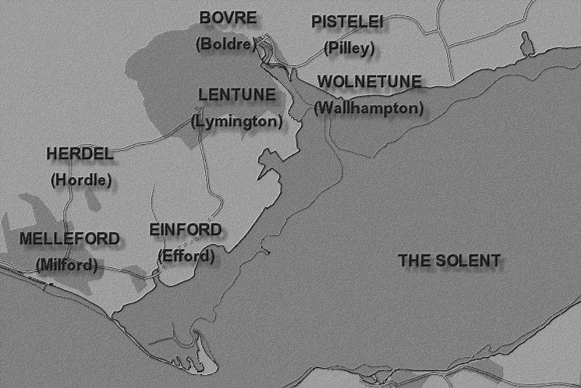
At the time of Domesday Book in 1086 this settlement was then called 'Lentune'.
The earliest settlement in the Lymington area was at the Iron Age fort at Buckland known as 'The Buckland Rings'. The hill and ditches of this fort still remain. (Below)
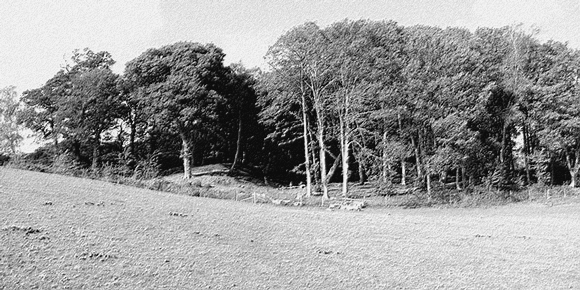
Buckland Rings
Lymington in the Middle Ages
Lymington was made a town by the Lord of the manor, William de Redvers, during the period between 1190 and 1200.
He gave Lymington a charter (a document granting the people of the town certain rights). Lymington was given the right to hold a market, merchants and craftsmen would come to live in or near Lymington to sell their goods at the market.
As well as a weekly market, Lymington held an annual fair. In the Middle Ages fairs were like markets but they were held only once a year for a few days. People would come from far and wide to buy and sell at these fairs. After 1315 Lymington only had 2 of these fairs.
The original settlement of Lymington was a group of huts beside the shore edge, until the Lord of the manor enlarged Lymington. He laid out a High Street, which was made extra wide to accommodate the market, which to this day still runs every Saturday.
From the Middle Ages until the 19th century Lymington was famous for making salt.
Salt was made through a process of first drawing sea water into clay-lined trenches where some of the water evaporated. The brine, which was now concentrated, containing more salt, was then pumped by windmills to tanks outside the boiling houses. It was then put into large copper or iron boiling pans which were fired by coal brought by barge.
As the water was evaporated, the salt crystals could be skimmed off to be dried and stored before being taken out again by barge to ships for transportation.
Evidence shows that at the peak in around 1730 there were 163 pans in the Lymington area.
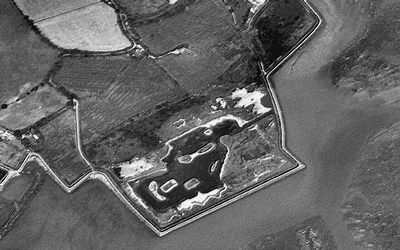
Between 1724 and 1766 Lymington exported 4,612 tons of salt in 64 ships to destinations including Newfoundland, America, Norway, Ireland and the Channel Islands.
Although seasonal, it could be a hugely lucrative business when the weather was dry and warm.
Records show that the owner of some of the Lymington salt houses, Mr Charles St Barbe, made a profit of £25,000 - equivalent to £2.2m today - and that was after paying heavy salt taxes.
By the middle of the 19th century the coastal salt production industry died out because of the cost of fuel and because cheaper rock salt became available from Cheshire.

The last salt works in the UK closed here in Lymington in 1865, in the part of the town now known as 'The Salterns'.
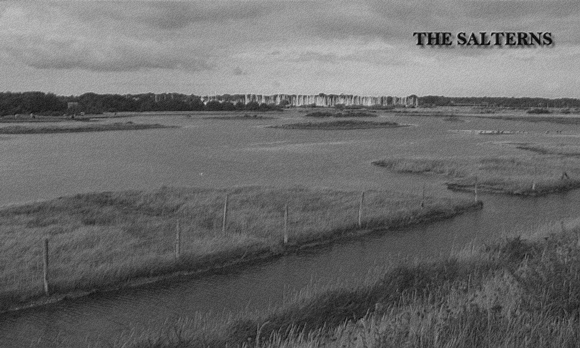
Lymington was a small but very busy port. Wine was imported from France and cloth which was woven in Salisbury was exported. Much to the annoyance of the people of Southampton.
In time of war, ports were required to provide the king with merchant ships, which could be easily converted to warships. Ports like Lymington were also required to provide crews for the ships. In 1346 during a war with France, Lymington was required to provide Edward III with 9 ships and 159 men.
During the Hundred Years War (which dragged on through the 14th and 15th centuries) the French attacked and burned Lymington twice. The first time in 1338 and at the same time they also attacked Southampton and Portsmouth and the second time was 32 years later in 1370, But this was not the last time that Lymington was attacked...
The first mention of a mayor of Lymington was in 1412.
16th and 17th Centuries
In 1545 the French attacked and burned Lymington again.
In 1685 the Protestant Duke of Monmouth led a rebellion against the Catholic King James II. The townspeople wholeheartedly supported the Duke. They raised a troop of cavalry who were led by the mayor. However the rebellion was crushed.
In the late 17th century a boatbuilding industry began in Lymington.
Celia Fiennes, a travel writer said of Lymington: 'Lymington is a seaport town. It has some few small ships and some little trade but the greatest trade is by their Salterns'.
In the early 18th century Daniel Defoe said that all of Southern England obtained its salt from Lymington.
By the early 18th century another industry was flourishing in Lymington - smuggling!
Smuggling in Lymington
In one tale about smuggling in Lymington, it was said that some weeping passengers and downcast crew came ashore from a ship that was moored here with the sad news that the captain had died whilst at sea.
A doctor was called, and he duly certified the captain as deceased, and called the undertakers.
Soon a sombre procession including the local customs men headed up the main high street, to drown their sorrows. The mourners called at 'The Angel Inn' (Originally called 'The George Inn', this is the oldest Inn in Lymington), where the King's men were especially well treated. The cortège continued, in a slightly less dignified manner, but as soon as there was a clear road, the hearse sped off so they were far away from the funeral, and the coffin and its contents of contraband were spirited away to a safer spot, no doubt to the benefit of undertakers, doctor and all of the mourners.
There is good reason to believe that this ruse would have been successful even if the customs men had not had their brains fuddled by drink, The vicar was in league with the smugglers too, and he allowed the tower of St Thomas' church to be used for storage.
Lymington's most famous smuggler must be Tom Johnstone. He was born here in 1772 and was brought up as a fisherman by his smuggling father.
By the age of 12 he had already developed formidable skills of seamanship, and knew the south coast of England well enough to act as a pilot to virtually anywhere. By 15 he was a smuggler himself.
When he was 21 he was taken prisoner by the French, and briefly languished in a French prison. He soon negotiated release, agreeing to carry messages on board a smuggling cutter to a spy in England. However, his jubilation at being released was short-lived, for the cutter was intercepted by a naval vessel during the crossing. Though Johnstone managed to avoid arrest by handing over the package of letters, he was grabbed by the press-gang as soon as the ship docked at Southampton.
He fought free of the press gang and escaped, He then volunteered as a navy pilot in the campaign to drive the French out of Holland. His skill as a navigator to the expedition won him a cheque for £1000 - a staggering sum in those days - a free pardon, and a personal letter of gratitude from the commanding officer. With these advantages, Tom was able to set up a fashionable household in London, and he began to lead a lavish lifestyle, running up debts of £11,000.
In 1802 his creditors caught up with him, and Johnstone was thrown into the Fleet prison. No prison could hold him for long, though.
This report soon appeared in a newspaper:
'Johnstone, the notorious smuggler, this morning effected his escape, notwithstanding he was confined in a strongroom with a double door. At the top of each door was a panel instead of glass, By forcing out these and creeping through them, Johnstone was able to reach the gallery, and from thence the high wall that surrounds the prison. There he found a rope ladder which his friends outside had provided for him. In the evening he arrived in a chaise and four on the coast near Brighton where a lugger was in waiting for him, in which he embarked for Calais, on his way to Flushing.
He had a severe wound in the thigh, which he received in the following manner. He had got on top of the last wall that separated him from the street 70 feet from the ground. A lamp was set in the wall, some distance beneath the place where he was. He let himself down, so as to fall astride the bracket supporting the lamp. In so doing, a piece of iron caught his thigh above the knee, and ripped it up almost to the top. At this moment he heard the watchman crying the hour; and had so much fortitude as to remain where he was, bleeding abundantly, till the watchman had gone his round, without perceiving him. Immediately after, he let himself down and crawled to where the post chaise was waiting in expectation of his escape.’
Johnstone recovered from his wounds in France, and was persuaded to take up the guinea run, smuggling gold from England to pay Napoleon's armies. Significantly, Johnstone does not seem to have regarded this activity as unpatriotic - despite the fact that England and France were then at war.
In the final phase of Johnstone's career he became the commander of the revenue cutter HMS Fox, pursuing his former comrades with all the vigilance of a poacher turned gamekeeper.
He eventually retired with a navy pension at the age of 44. Johnstone died - remarkably peacefully, after such an active life - at the age of 67.
(The above smuggling information is used with the kind permission of (www.smuggling.co.uk)
18th Century
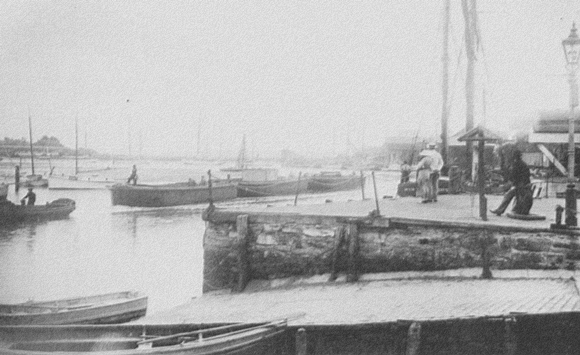
Town Quay
In 1731 a wealthy miller from Boldre named William Cross built a dam across the river to create a good head of water to work his mill a couple of miles upstream, much to the annoyance of the townspeople. The river tended to silt up and this was made worse by the dam. He later turned the dam into a toll bridge.
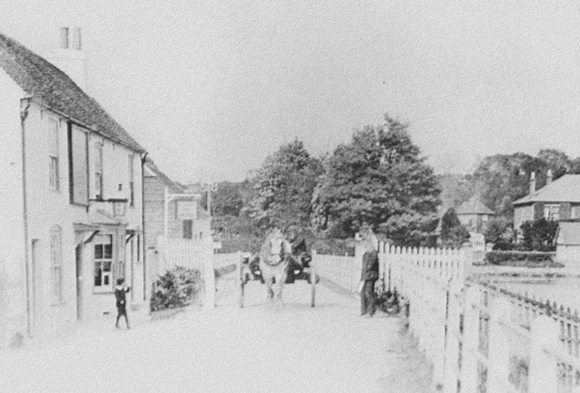
The Toll Bridge
In 1899 the second lord Montagu was driving King Edward VII on one of his first car rides, but at the toll bridge was made to wait by the gatekeeper, who was still annoyed after someone had sped across earlier that day without paying the toll fee. The king was very amused by this incident.
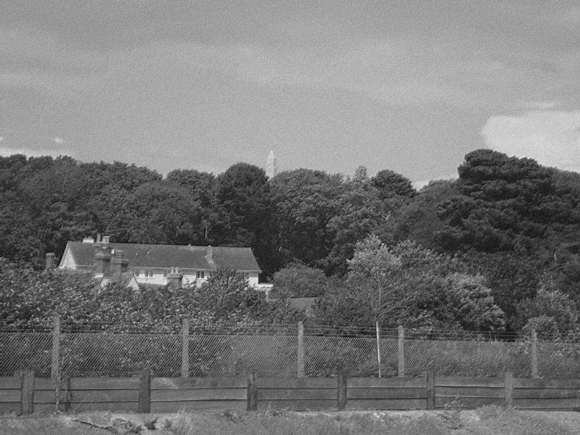
The obelisk as seen from the town quay visitors moorings
Anyone who uses the river, must have at some time noticed the slender tapering concrete point poking out through the tops of the trees on Mount Pleasant Hill situated on the right hand bank just past the ferry terminal.
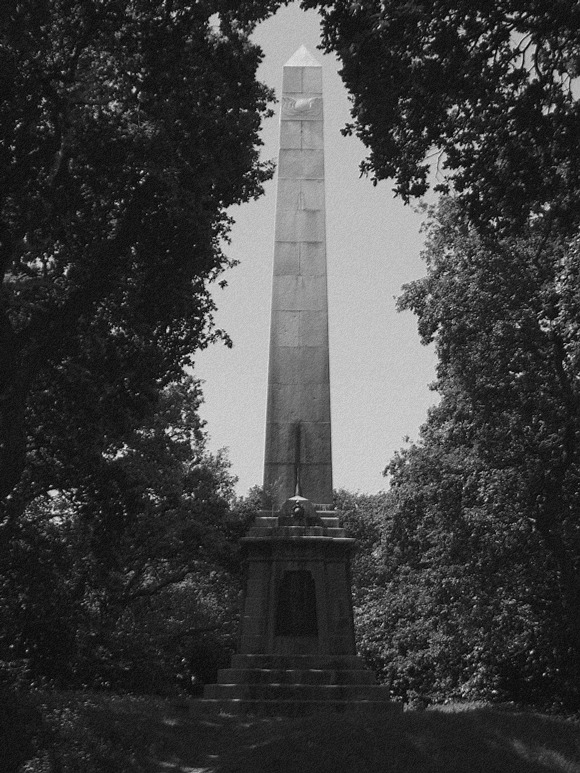
This is an obelisk (above), It is a memorial dedicated to the memory of Sir Harry Burrard Neale born in 1765 and died at Brighton on 7th February 1840 aged 75, he was buried at Lymington Church.
He held the office of Member of Parliament for Lymington at different times between 1790 and 1835. He gained the office of a Lord of the Admiralty between 1804 and 1807, and the rank of Admiral of the Royal Navy in 1810. He was invested as a Knight Commander and a Knight Grand Cross Order of the Bath in 1815 and 1822 respectively, then a Knight Grand Cross in the Order of St Michael and St George in 1824.
In 1825, he became Commander-in-Chief of the Mediterranean Fleet of the Royal Navy. During his naval career he saw a considerable amount of action and under his orders 20 enemy ships of war were destroyed.
The obelisk was erected in the 4th year reign of queen Victoria and unveiled by her majesty Adelaide, the queen dowager their royal highnesses duchess of Gloucester & Princess Augusta. The obelisk can be viewed by a road via Monument Lane which is situated opposite the Wightlink ferry terminal vehicle entrance, a little way up on the left hand side.
19th Century
By the time of the first census in 1801 the population of Lymington was 2,378. It would seem very small to us now, but by the standards of the time it was a small market town.
Lymington gained gas street lighting in 1832, The lamp columns were supplied to the town as a gift from Admiral Sir Harry Neale.

The lamp was located next to St Thomas Church. It has now been relocated between the Royal Lymington Yacht Club and the slipway at Bath Road.
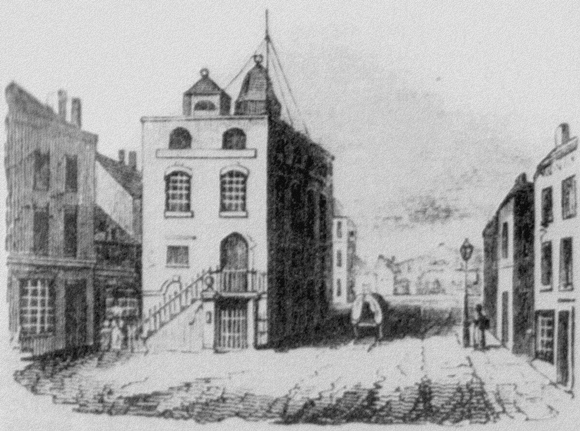
The Old Town Hall
Until the middle of the century the town hall stood in the middle of the High Street, between 'The Angel Inn' & 'The Nags Head' ('The Nags Head' then changed it's name to 'The Londesborough', which is now a 'Boots' Opticians). The town hall was later demolished in 1858.

The drinking fountain shown in the picture (above) was located at the top end of St Thomas Street. It has now been moved to Bath Road Recreation Ground (below).
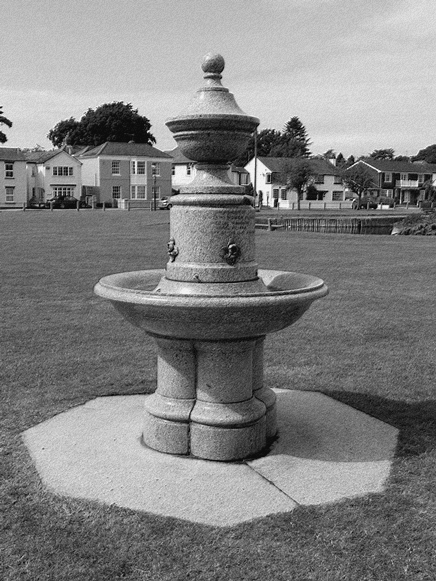
In 1833 the seawater baths opened an open air swimming pool.
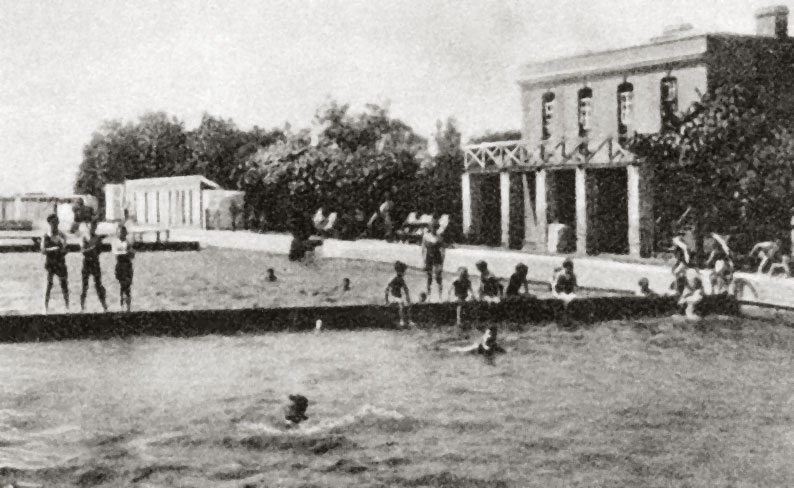
The Open Air Seawater Baths 1930s

The Open Air Seawater Baths today
In 1836 the poorhouse was rebuilt. This time it was called the workhouse and conditions inside were made deliberately harsh to discourage 'idlers' from seeking help.
In 1830 the first paddle steamer travelled between Lymington and Yarmouth.
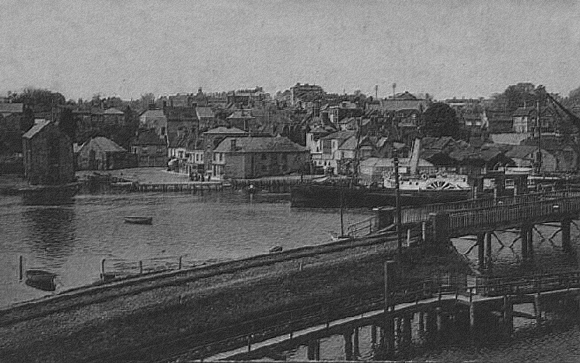
PS Lymington at the Town Quay
By 1893 'PS Lymington' was the smallest paddle steamer to sail to the Isle of Wight, Paddle Steamer 'Lymington' was built to replace 'PS Mayflower'.

PS Mayflower at the Town Quay
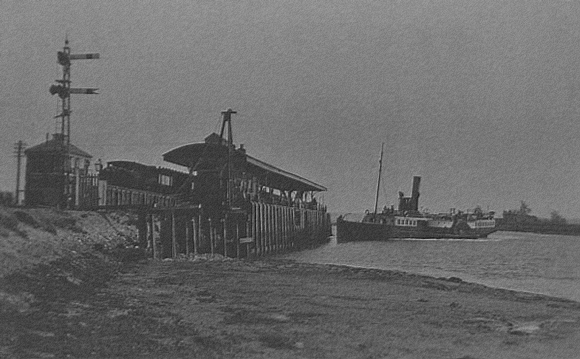
Paddle Steamer 'Solent' turning at the pier
The railway reached Lymington in 1858.
There had been a boat building industry in Lymington since the late 17th century. From the early 19th century there was specifically a yacht making industry.
The town obtained it’s water from over 600 wells until 1884 when a piped water supply was obtained from borings at Ampress, which was conveyed to a water tower near the cricket field.
A fire brigade was formed in 1889.
The population of Lymington in 1851 was 4,182, but it hardly changed in the second half of the 19th century. The end of population growth was largely because of the death of the salt trade.
In the 20th century new industries came to Lymington and population growth began again...

The High Street looking towards the River - 1900
20th Century
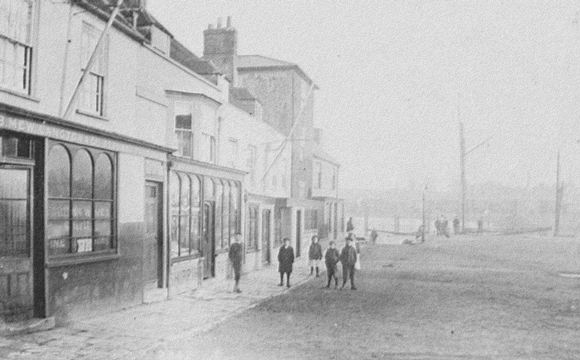
The Quay looking towards 'The Ship Inn' and the Fisherman's Quay
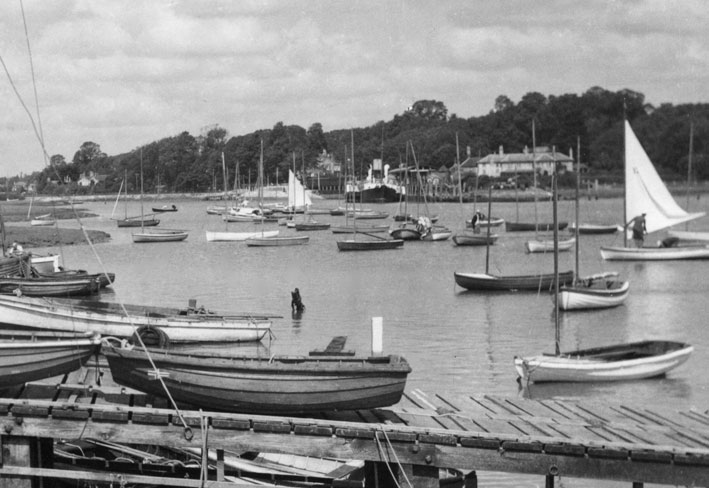
View from The Yacht Club towards the pier
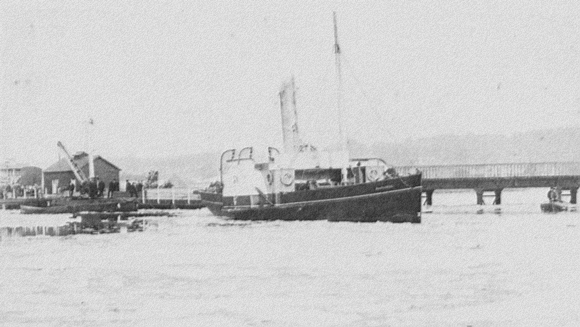
The Paddle Steamer 'Mayflower' iced up off the Town Quay in 1908
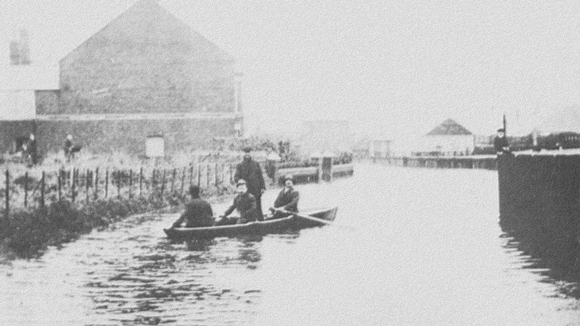
Disaster hit Lymington in 1909 when there was a severe flood
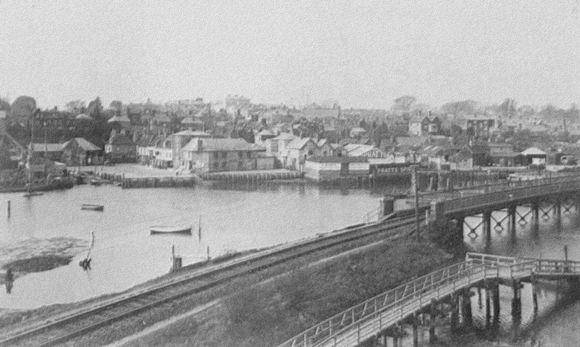
Looking towards the Town Quay
In the foreground is the pontoon where passengers alighted on the halfpenny rowing boat ferry. Along the riverfront at the quay are Mew Langton's brewery buildings.
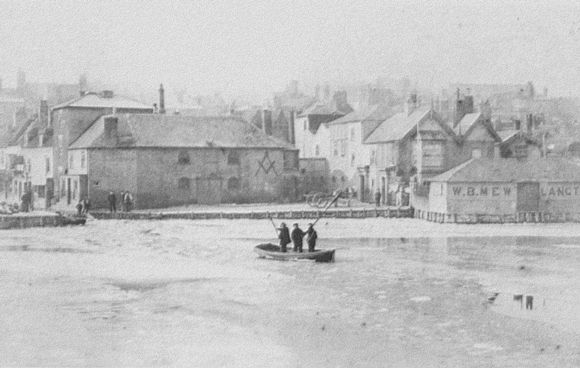
Frozen Town Quay
The picture above shows the rowing ferry crossing the harbour breaking the ice with pickaxes. One ferryman 'Puffer' Tomkins who late one night around 1930, worse for drink was rowing an old lady out to old ferry house. On his return trip 'Puffer' fell into the river and clung onto the stern of the boat.
Later 'Puffer's' worried son rowed out in the darkness to look for his father, upon finding him he hauled his father out from the cold water, but despite an injection administered by Dr Pitt, 'Puffer' died of hypothermia.
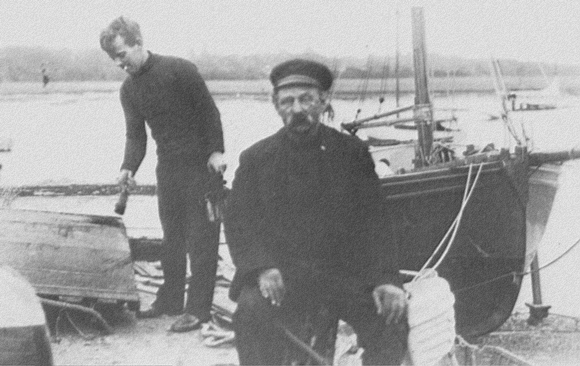
Dan Bran (above centre)
One of the greatest legendary characters of the Lymington River was Dan Bran. The son of seaman George Bran, he was born at the Waterford end of town and named by his mother as Daniel Plat Bran, after Colonel Platoff who was standing for parliament at the time. After learning the trade at Lymington shipyard and at Poole, Dan began his own boat building business in 1910, in a large shed on the river's edge by the seawater baths.

Dan Bran's shed on the edge of the seawater baths
He designed and built the first 11-foot 'Lymington Pram' in 1912 for keen racing yachtsman Captain Nicholson of Creek Cottage, then in 1925 came the 14-foot pram. His famous Lymington Scows underwent a revival in the 1980's.
Dan never worked to plans for boatbuilding, but would draw lines on the dirt floor of his shed and say 'I keep the Measurements in my head'. He lived in King's Saltern Road, next door to the Mayflower Hotel, where his drinking capacity was equally renowned.

PS Solent
He was not averse to firing his shotgun at any intruder on the river, he once fired both barrels of his 12-bore shotgun into the wheelhouse of Southern Railways Lymington to Yarmouth ferry 'Solent' after repeatedly complaining that the wash from the paddle-steamer had caused his dinghies to break from their moorings.
Dan Bran's shed was burned to the ground - many believe it was arson - and he died in December 1950, followed by his wife one week later.
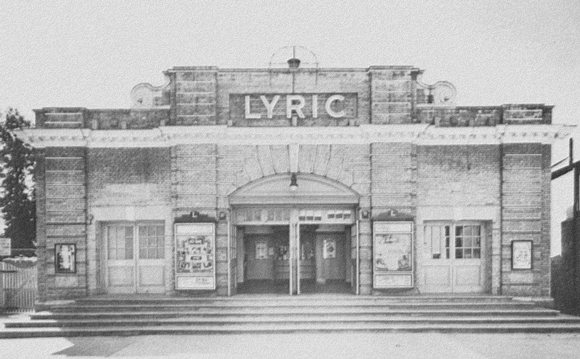
The old 'Lyric' Cinema
At the top end of the high street a cinema called the Lyric was built in 1912 by local builders Rashley with seating inside for 500 people. The cinema also acted as an army recruiting office during the first world war. The Cinema closed in 1963. On this site now stands a 'Marks & Spencer' supermarket.
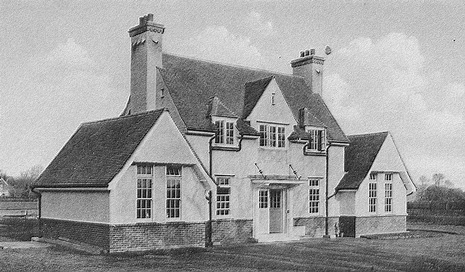
Lymington Hospital
In 1913 a hospital was opened in Lymington. The money to build it came from voluntary donations. This hospital was demolished at the end of 2006, to be replaced by a more modern one in 2007.
A new Town Hall was built in 1913. It was demolished in 1966 to make way for the Earley Court shopping precinct.
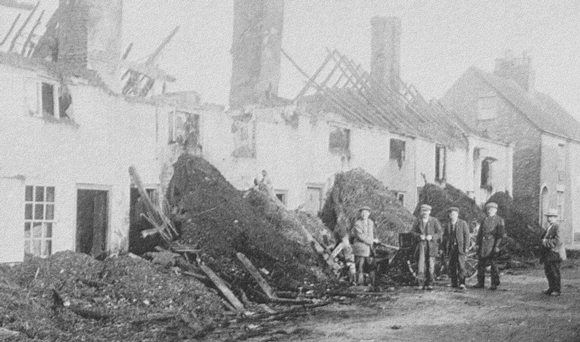
27th May 1913 a fire destroyed 5 houses in Belmore Lane
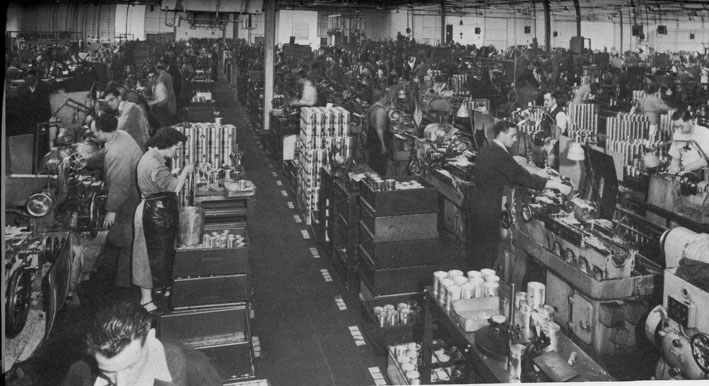
Wellworthy Factory
In 1919 the Wellworthy engineering works was founded. It closed 70 years later in 1989.
A yacht club was founded in the 1880's which soon faded re-emerging again in 1914, to last only one season. This club, 'The Lymington River Sailing Club' was re-founded in 1922 to become 'The Royal Lymington Yacht Club' in 1938.
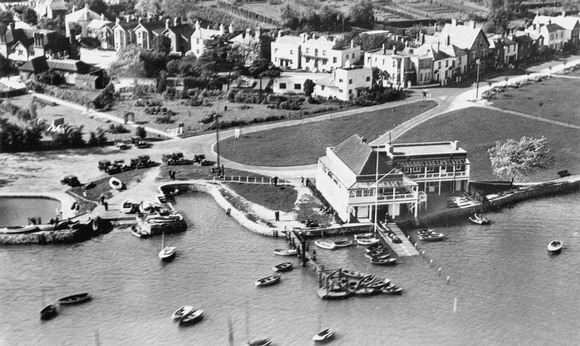
The Royal Lymington Yacht Club
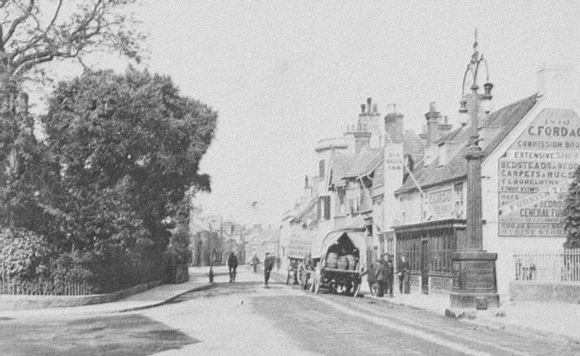
St Thomas Street 1905
The picture above shows the old Fords furniture shop in St Thomas Street next door to the six bells pub. In 1941 Fords was destroyed by a German bombing raid and then rebuilt.

The High Street looking towards St Thomas Church - 1925

The High Street looking towards the river - 1930
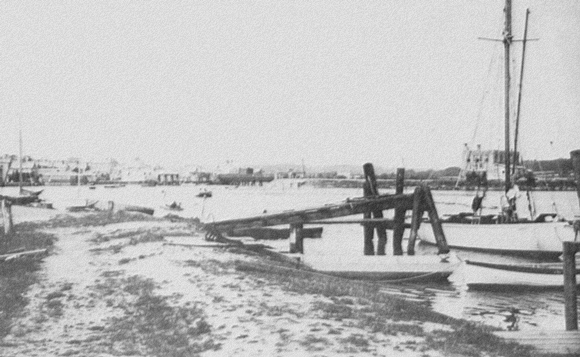
The river looking towards the Town Quay
In the days before the riverbank was reinforced. The tall building on the opposite bank, to the right, is the Pierside Laundry. This was originally built as a theatre and place of entertainment. The laundry with many rows of washing lines at the rear to dry the clothing. There were approximately 50 employees, in later times the site was used as an engineering works.
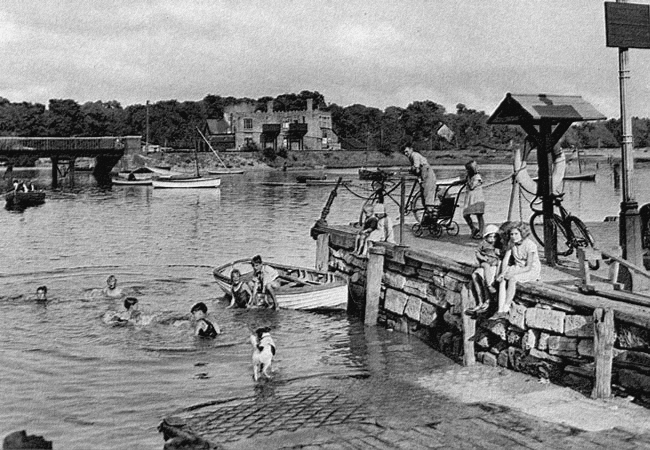
The Quay looking towards The Laundry - 1947
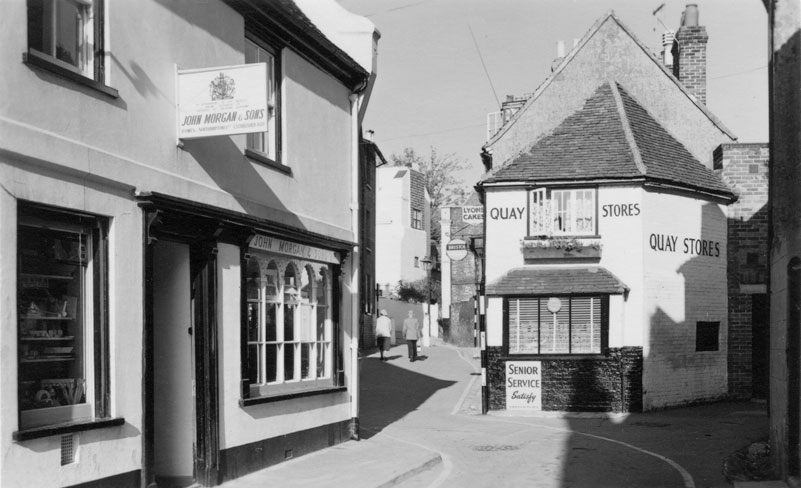
Quay Street - 1950
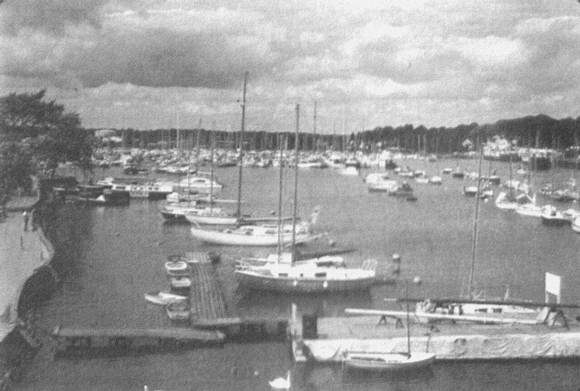
The Fortuna dock area - 1960
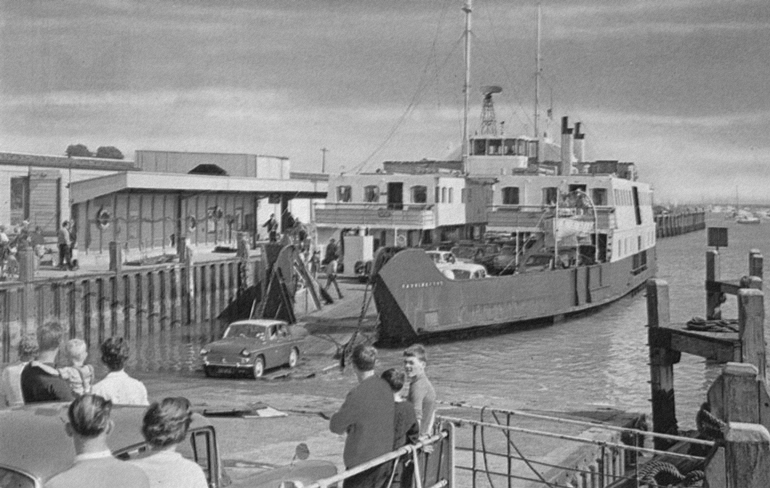
The Isle of Wight Ferry - Farringford - 1960
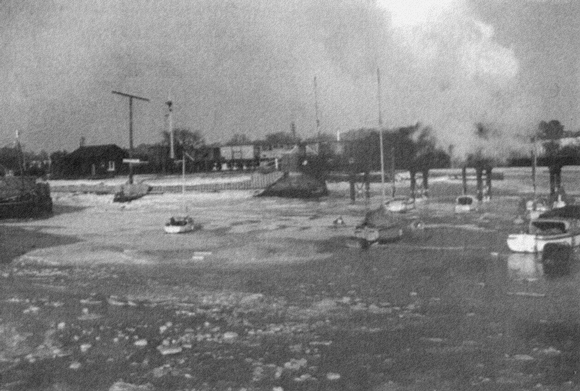
The Town Quay area looking towards the railway bridge, winter 1963

The river looking towards the Town Quay - 1969
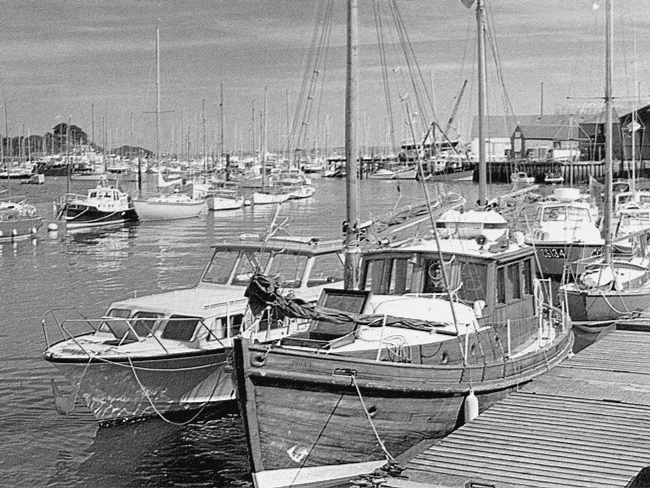
The Town Quay - 1970
In 1989 another severe flood affected Lymington.
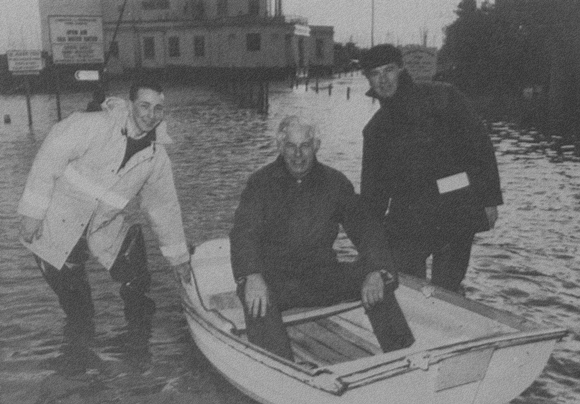
Previous Harbour Master Fred Woodford, Previous Chairman of The Commissioners Mike Corbin and Previous Harbour Assistant Jason Coombes after the flood
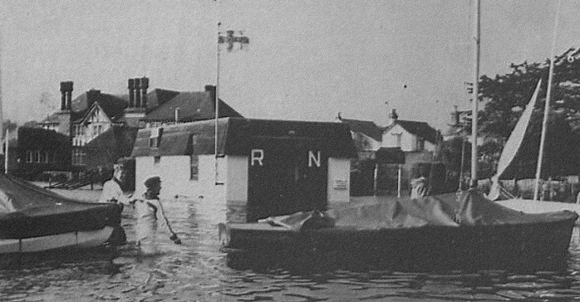
The Lifeboat Station in Bath Road with the Mayflower Pub in the background

The Lymington Town Sailing Club
21st Century
In 2007 a brand new, state-of-the-art Hospital was constructed at a cost of £36 million opened its doors to the public on 6th February by Princess Anne. The hospital provides both scheduled and acute care and is Hampshire Community Health Care's flagship hospital.
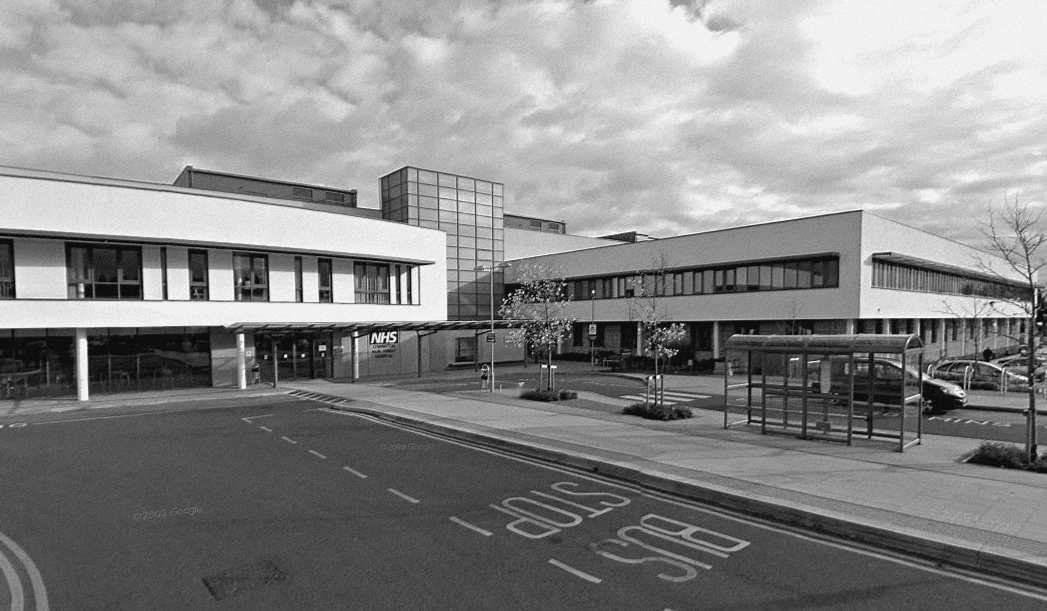
The new Lymington Hospital
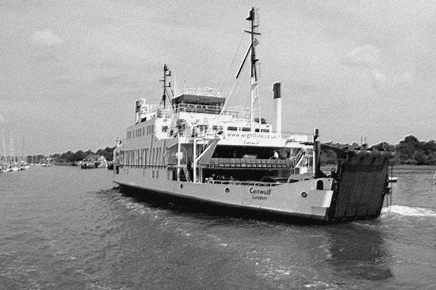
Cenwulf
Three Wightlink ferries have run from Lymington to Yarmouth since the 1970s, named after Anglo Saxon Kings: Cenred, Caedmon and Cenwulf.
In February 2009 they were replaced by larger vessels built in Croatia: Wight Light, Wight Sky and Wight Sun.

Wight Sun
Lymington Harbour Masters
1900 - 1918 Mr W Harper - Yacht Skipper / Seaman / Part Time Harbour Master.
1918 - 1934 Mr G House - Shipwright, RN / Full Time Harbour Master.
1934 - 1955 Mr B Thomas - Yacht Skipper / Seaman / Full Time Harbour Master.
1955 - 1960 Mr C Satterthwaite - Ship’s Engineer / Full Time Harbour Master.
1960 - 1960 Mr W Smith - Foreman Ship’s Rigger. (Stayed Only Weeks)
1960 - 1993 Mr F V Woodford - Time-served Boat builder / Full Time Harbour Master.
1993 - 2006 Mr A P Coster - Merchant Navy / Assistant Then Full Time Harbour Master.
2006 - Present Mr R Willegers - Operations Director Wightlink / Full Time Harbour Master / Chief Executive.
This Brief History Of Lymington Was Compiled By J. G. Coombes © 2006 & 2011.